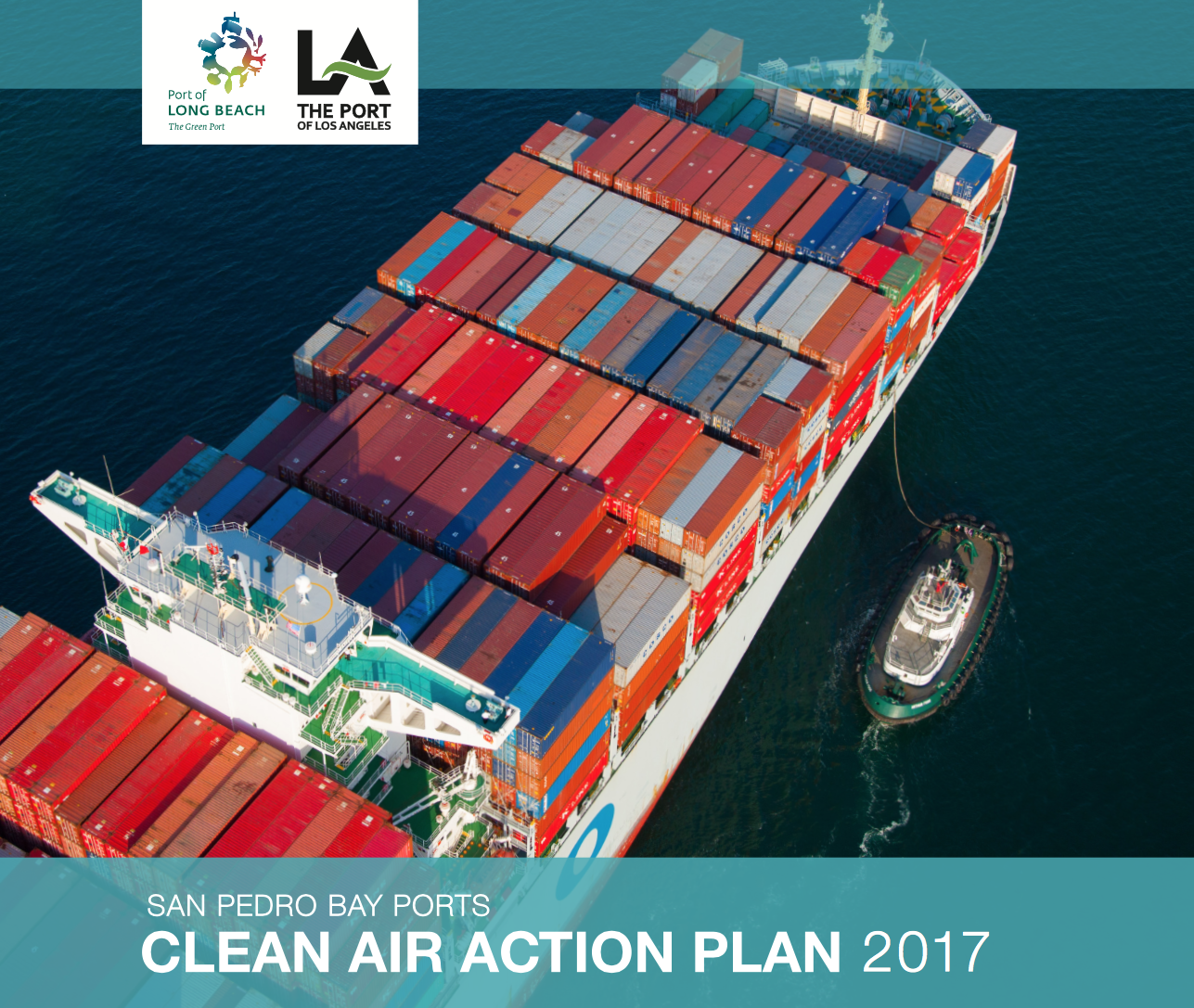In 2006, the Ports of Long Beach and Los Angeles created and approved the San Pedro Bay Ports Clean Air Action Plan, or “CAAP.” The CAAP provides the overall strategy for dramatically reducing air pollution emissions from cargo movement in and around the Ports. The Ports updated the CAAP in 2010 with new strategies and emission-reduction targets. Since the adoption of the original CAAP, diesel particulate emissions from mobile sources in and around the Ports are down 87%. Despite this significant progress, the Ports recognized that more needed to be done. The CAAP 2017 Update provides new strategies and emission-reduction targets to cut emissions from sources operating in and around the Ports, setting the Ports firmly on the path toward zero-emissions goods movement.
The CAAP 2017 Update was developed over two years as part of a tremendous effort of outreach and community involvement. The Ports held over 70 individual stakeholder meetings and three public workshops and in 150 days of formal comment periods received nearly 1,000 pages of comments.
The CAAP 2017 Update contains 14 strategies to reduce emissions from sources in and around the Ports, plan for zero-emissions infrastructure, encourage freight efficiency, and address energy resources. These strategies include phasing out older trucks and transitioning first to near-zero emissions then zero-emission trucks by 2035, requiring terminal operators to purchase zero-emissions equipment if feasible, or near-zero or cleanest available when procuring new equipment, further reducing emissions from ships at-berth, transitioning the oldest, most polluting ships out of the San Pedro Bay fleet.
